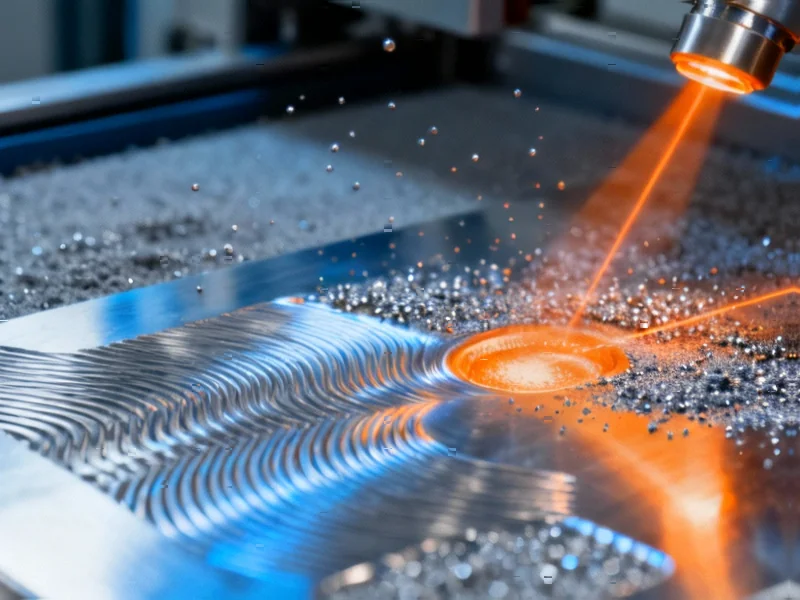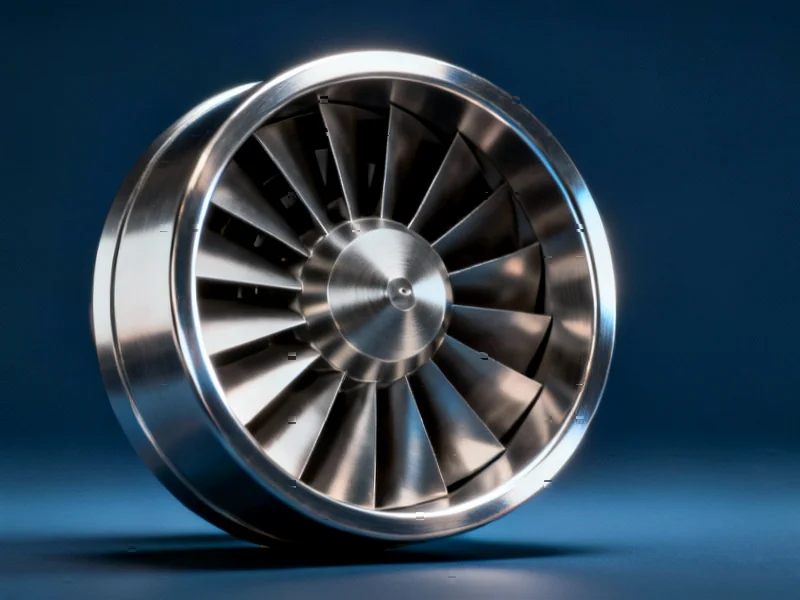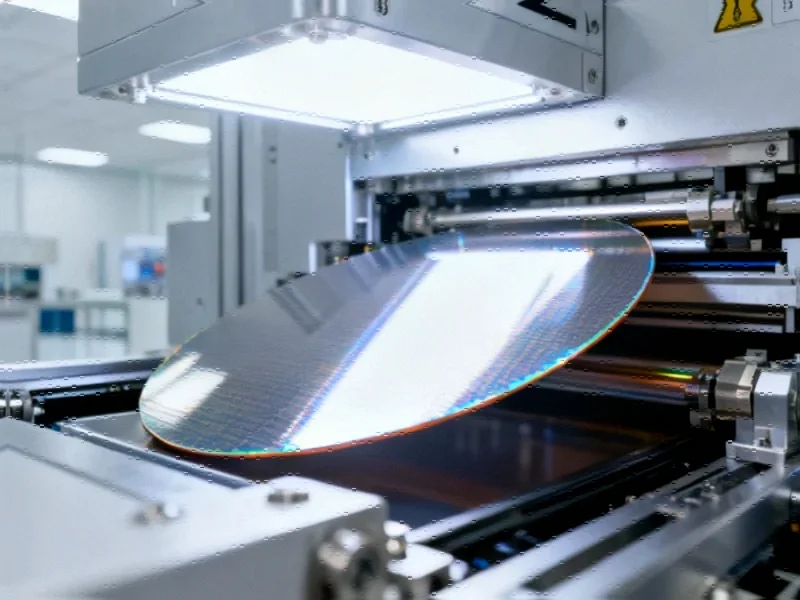Breakthrough in Metal 3D Printing Technology
Researchers have developed an innovative dual-laser approach for metal 3D printing that significantly enhances the mechanical properties of manufactured components, according to recent scientific reports. The technique, which introduces ultrasonic pulses during the printing process, has demonstrated remarkable improvements in both strength and durability of 316L stainless steel, a material widely used in medical, aerospace, and automotive applications.
Table of Contents
Overcoming Manufacturing Limitations
Selective Laser Melting (SLM), classified as a laser-based powder bed fusion process according to industry standards, has faced challenges with material consistency and structural integrity. Sources indicate that traditional SLM processes often result in porous materials with anisotropic properties due to the formation of large columnar grain structures during rapid crystallization.
Analysts suggest these limitations have restricted broader industrial adoption of metal 3D printing for critical components. The characteristic high temperature gradients and cooling rates in conventional SLM processes typically create elongated grains that can compromise material performance.
Ultrasonic Grain Refinement Mechanism
The research team implemented a novel approach using two synchronized fiber lasers during the printing process, according to the published findings. While a continuous ytterbium laser handled the primary melting of 316L steel powder, a second quasi-continuous-wave (QCW) laser generated nanosecond pulses that interacted with the molten metal pool.
The report states that this interaction created powerful ultrasonic pulses within the near-surface layer of the melt, producing shear deformations in the crystallizing material. This ultrasonic influence reportedly triggered grain refinement mechanisms similar to those observed in traditional metal casting and welding processes.
Significant Material Improvements Documented
Experimental results demonstrated substantial enhancements in material properties, according to the research team. The average grain size decreased from approximately 50 micrometers to 25 micrometers under optimal QCW laser parameters – representing a 50% reduction in grain dimensions.
Mechanical testing revealed even more impressive outcomes, with the ultimate tensile strength increasing by approximately 13-15% compared to conventionally printed samples. Additionally, the elongation at failure improved from about 34% to 40%, indicating enhanced ductility alongside the strength improvements.
Scientific Foundation and Previous Research
The concept of ultrasonic grain refinement builds upon established metallurgical principles, including grain boundary strengthening mechanisms. Previous studies had explored ultrasonic influence on light metal alloys like aluminum and magnesium, where cavitation effects and acoustic currents were identified as primary refinement mechanisms.
Researchers note that similar approaches using sonotrodes attached to printing substrates had shown promise with other alloys, reducing anisotropy in materials like 304L stainless steel and Inconel 718. However, the direct introduction of ultrasonic pulses through laser interaction with the melt pool represents a significant advancement in application methodology.
Industrial Implications and Future Applications
The enhanced mechanical properties achieved through this dual-laser approach could address critical limitations in metal additive manufacturing, analysts suggest. The transition from columnar to more equiaxed grain structures, combined with reduced porosity, may enable broader use of 3D-printed components in load-bearing applications.
Industry observers note that the improved material consistency and performance characteristics could make metal 3D printing more viable for manufacturing critical aerospace components, medical implants, and automotive parts where reliability and durability are paramount.
Research Continuation and Development
This study represents part of an ongoing research initiative exploring advanced process modifications in metal additive manufacturing. The successful application of ultrasonic influence through laser-generated pulses builds upon previous work with various metal systems and suggests potential for further refinement and optimization.
Researchers indicate that future work will focus on parameter optimization and scaling the technology for industrial applications, potentially revolutionizing how high-performance metal components are manufactured through additive processes.
Related Articles You May Find Interesting
- Industry Veteran Warns of Blockbuster Game Bubble, Champions Return to “Fun-Firs
- Why MedTech Is Becoming Venture Capital’s Most Promising Frontier
- Yelp Expands AI Integration with Enhanced Chatbot and Automated Services
- UK Government Unveils Sweeping Regulatory Reforms to Boost Business Competitiven
- BoxGroup’s $550M Fundraise Signals Enduring Power of Collaborative Venture Strat
References & Further Reading
This article draws from multiple authoritative sources. For more information, please consult:
- http://en.wikipedia.org/wiki/ARCA_races_at_Salem
- http://en.wikipedia.org/wiki/Grain_boundary_strengthening
- http://en.wikipedia.org/wiki/Grain
- http://en.wikipedia.org/wiki/Crystallization
- http://en.wikipedia.org/wiki/Micrometre
This article aggregates information from publicly available sources. All trademarks and copyrights belong to their respective owners.
Note: Featured image is for illustrative purposes only and does not represent any specific product, service, or entity mentioned in this article.



